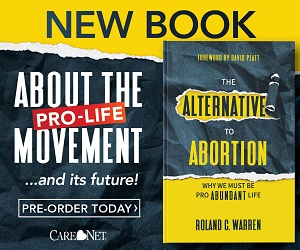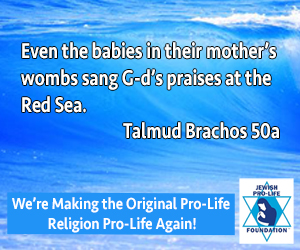A Pennsylvania pregnancy center director is preserving life not only in her career but also by means of her own family.
Sarah Bowen and her husband have recently added to their family of six by adopting two embryos.
Bowen, executive director of Promise Life Network in Slippery Rock, Pa., and president of Pennsylvania Pregnancy Wellness Collaborative (PPWC), and her husband talked a few years ago about adopting a child after the birth of their fourth child.
“He wasn’t really ready,” she said, and she agreed to wait until he was willing to move forward.
Less than two years ago her husband agreed to look into the process and the couple considered domestic adoption, international adoption and foster-to-adopt. Bowen began researching embryo adoption. These embryos were created through in vitro fertilization. Parents then decide to allow someone else to adopt and implant the extra embryos instead of discarding them.
“We prayed about what God wanted us to do,” she said. “We looked closely at the less wanted embryos,” or the ones with ‘genetic defects’ or the least likely to survive implantation.
She said they explored the opportunity with an adoption agency but felt as though God was telling them to cease this process.

Bowen had been part of a social media group for those seeking to adopt out embryos. She said it was there that one post caught her eye. One embryo had preimplantation genetic screening, or PGS. It had a one percent chance of successful implantation. Bowen and her husband chose to implant two of this woman’s embryos.
Click Like if you are pro-life to like the LifeNews Facebook page!
“I prayed they would both survive and that we would have fraternal twins,” she said.

Bowen said she was very specific in explaining to the biological mother and the fertility clinic that she did not want an abortion for any reason after the implantation.


In November 2021, the Bowens signed an agreement to move forward. Bowen established herself as a patient in a fertility clinic in April of 2022. In August of 2022 the transfer took place.


Her babies were due to be born in May 2023.
The first trimester went very well, she said. However, at 15 weeks, Bowen’s water broke. “They told us Baby A lost his entire amniotic sac and his survival likelihood was very low.”
Baby B, she was told, had a probable survival rate of 30 percent. The doctors brought up the idea of selective abortion for Baby A and sent Bowen home to wait.
Bowen stood firm on her refusal to abort.
The doctors told her if she “was still pregnant in a week” to call back.
One week later, she was still pregnant. The plan then became to try to remain pregnant until week 23, go into the hospital and stay until week 34 and deliver.

At 22 weeks Bowen began to lose more fluid. She was hospitalized and the babies were delivered at 24 weeks via emergency C-section this past January 2023.
Baby A, named Jeremiah, was born with a prolapsed umbilical cord. Before his birth, doctors were not certain he would have lungs. However, the baby boy was born with both lungs in place. He was intubated and placed in an isolette.
Jeremiah was born weighing one pound, six ounces. Twin Jonathan weighed one pound, 13 ounces. Jonathan was able to come home to the Bowen household in June. Jeremiah’s journey has been the most difficult.
“Jeremiah has had a long road,” Bowen said, “He has had a lot of serious issues through his stay in the hospital. He coded one day for 11 minutes. We got a call telling us they would try to keep him alive until we got there.”
The hospital is an hour from the Bowen home. She and her husband hung up the phone and held hands and prayed immediately. Her husband was only able to say one phrase before starting to cry, “Lord, these are your babies.”
The phone rang again, and the medical team told the Bowens Jeremiah was okay for now.
“It was touch and go for three to four days,” she said.
Jeremiah was still in the NICU as of press time.
Bowen said she does not regret any part of this process. The family’s goal has been to bring life to two young boys who barely stood a chance.
“Abortion is cheap at the end of the day,” Bowen said, adding simply choosing to discard an embryo “is easy.”
“Bringing them to birth,” she said, is so much more costly and worth it.

after Jonathon was discharged/Sarah Bowen
She said she hoped her story draws more families to choose embryo adoption.
“If we really believe life begins at conception, why wouldn’t we do something?” said Bowen.
Carrying the twins for 22 weeks was no different than carrying her four biological children, she said. Holding the babies in the weeks that followed was just as significant as holding her biological children the first time.
“It didn’t feel different,” Bowen said. “Even though it was a traumatic delivery. I never had a hard time bonding. They bonded to me as my own. It was natural.”
This adoption has only made Bowen more passionate in her roles at the pregnancy center and with the new pregnancy help collaborative in her state.
More information about embryo adoption is available at Nightlight Christian Adoptions (https://nightlight.org/) or the National Embryo Donation Center (https://www.embryodonation.org/).
LifeNews Note: Tabitha Goodling has been writing for media outlets for more than 20 years in her home state of Pennsylvania. She has served as a client services director at her local pregnancy center since 2018. She and her husband are raising four teenage daughters, which include a set of triplets. This column originally appeared at Pregnancy Help News.








